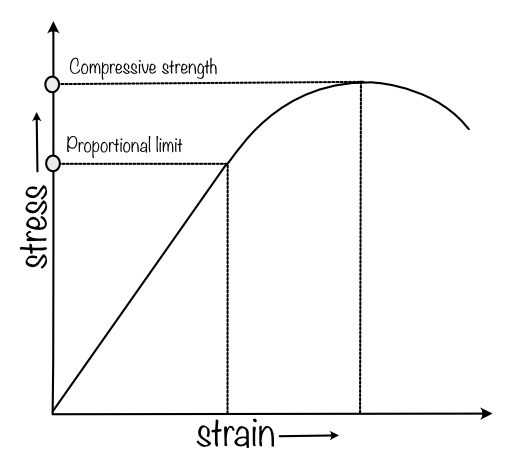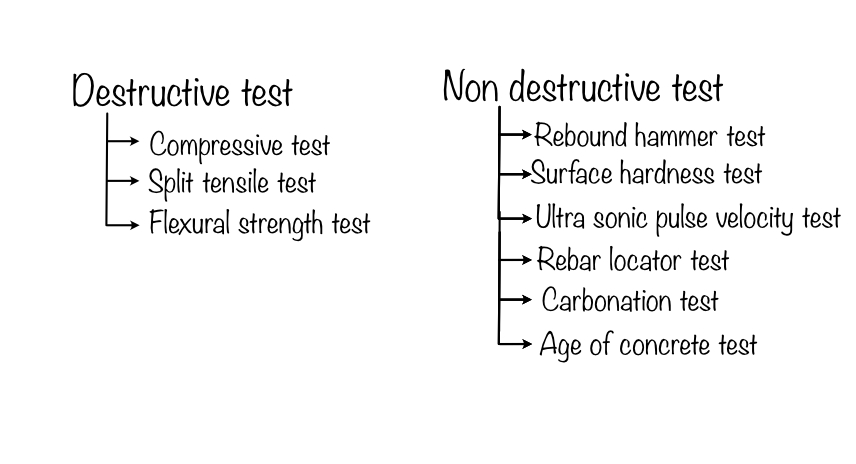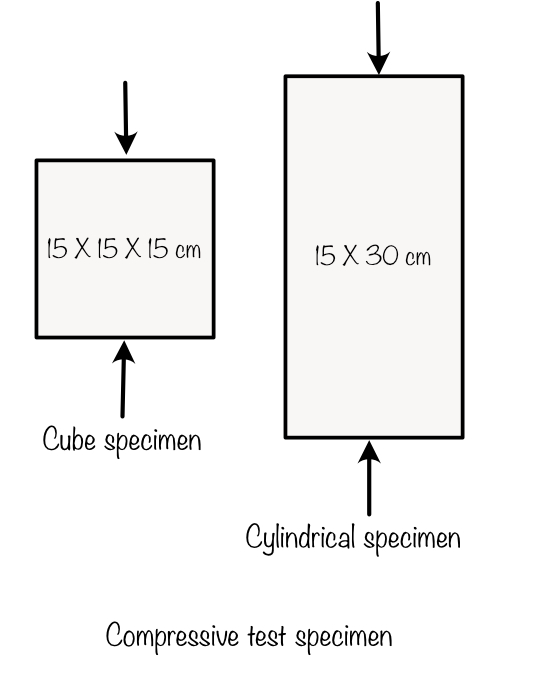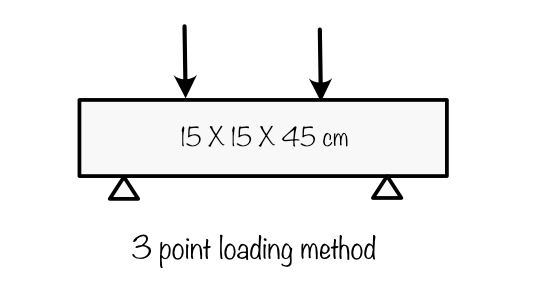Hardened concrete as the name implies it has aquired its shape and completes the initial set time period, and it is not plastic anymore. It will not be workable , i.e. it will not possible to change the shape or remould the structure. It is basically a stage of “plasticity”, where it has lost his fluidity completely.
Hardened concrete gains strength with time and it is important to check the strength and quality of the hardened concrete.
Properties of hardened concrete
Mechanical strength
In the case of concrete it is also called as compressive strength of concrete. The strength of concrete is decided based on the requirement of the construction. The strength of concrete may vary from low to high strength concrete (20 MPa – 50 MPa).
Durability
It is the ability to resist weathering action, chemical attack, abrasion , or any other process of deterioration, degradation. Durable concrete will retain its original form, quality and serviceability when exposed to its environment.
Porosity and density
Porosity and density are responsible for the strength of concrete. As the porosity increases the density decreases thus affects the overall strength of concrete.
Fire resistance
Concrete though not a refractory material is incombustible and has good fire-resistant properties.
Stress strain relation
Use stress strain graph to study the behaviour of concrete under applied loads.

Tests on hardened concrete
There are different methods through which we can quantify the different properties of hardened concrete. It is very important to conduct these test to ensure that the desired properties is achieved. Basically the test on hardened concrete are broadly classified into :

Concrete is weak in tension but yes it is good in compression….
Compressive strength of concrete
It is the strength of concrete require to resist the compressive load. Measure the ability of concrete block to resist failure from cracks .
In this test basically, we apply a compressive load and then note the maximum load a specimen can bear before failure which is equal to the compressive strength of concrete.

Split tensile strength of concrete
It is a method to determine the tensile strength of concrete, though it is difficult to calculate the tensile strength directly so we test a cylindrical specimen which splits across the vertical diameter.
In direct tensile strength test it is difficult to apply true axial load. The tensile strength calculated from this test is closer to the true tensile strength of concrete.

Flexural strength of concrete
It is also an indirect method to determine the tensile strength of concrete. In this method, we note the maximum stress on the tension face of an un-reinforce concrete beam or slab at the point of failure in bending.

Check these post to know more about the Non destructive tests..

Android Apps
⭐️ ⭐️ ⭐️ ⭐️ ⭐️ 1000+ | 400,000 + Downloads (Cumulative)
At eigenplus, our goal is to teach civil engineering students about structural analysis and design starting from the fundamental principles. We do this with the help of interactive android applications and accompanying web articles and videos.
Our apps have helped more than 400 thousand students across the world to understand and learn the concepts of structural engineering. Check out our apps on the google play store.